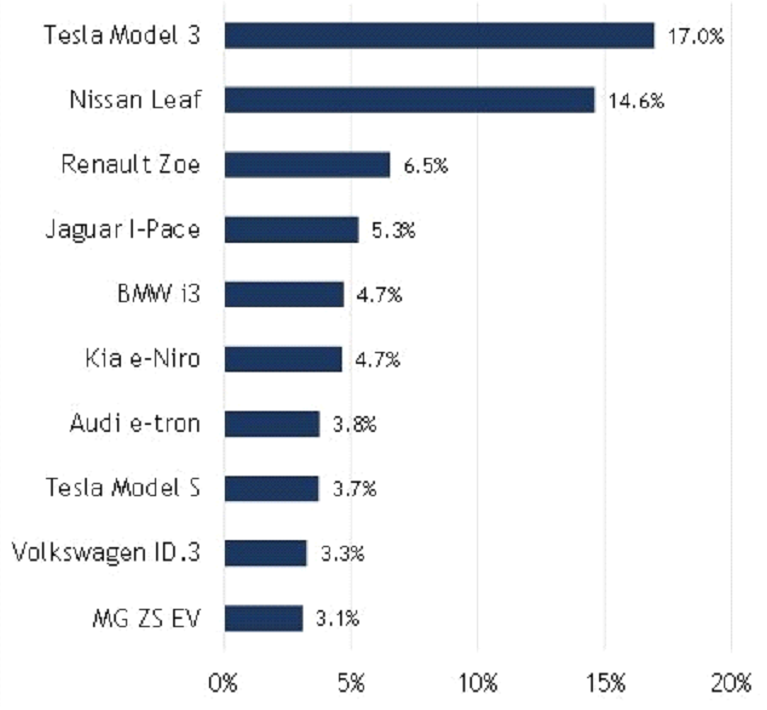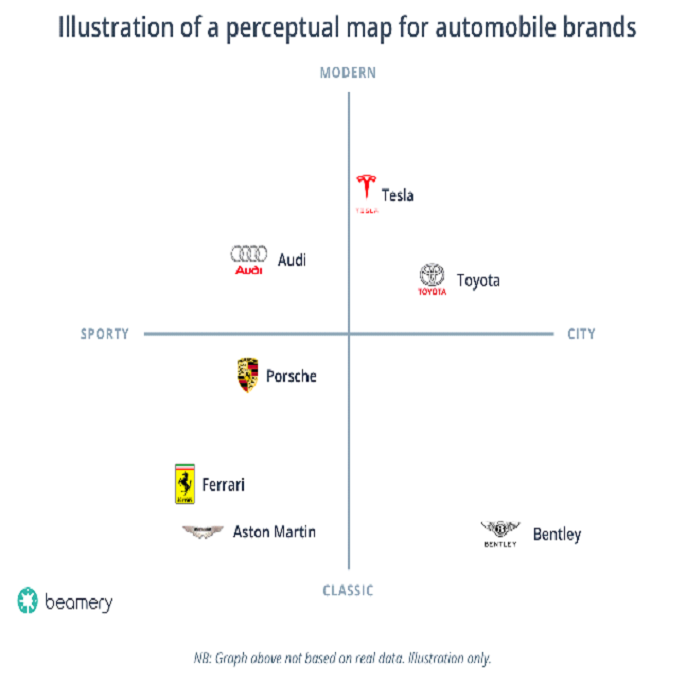
Marketing audit reports will help Tesla develop a marketing plan for operation in the UK market. In the report, macro and micro environmental analysis is done, which will provide insight into the region's business environment. It will provide an insight into the opportunities that prevailed in the UK market. Furthermore, the competitive analysis will throw light on the close competitors of Tesla and ways in which it could develop strategies to remain ahead of its competitors. There are many competitors of Tesla in the automobile sector: Polestar, Vauxhall, Audi, and Volkswagen. SWOT analysis has also been done to visualise opportunities that Tesla could grab to boost its sale.
Introduction
A marketing audit is a process of closely examining the business environment of an organisation, beginning from its strategies to targeting any specific business activity (Innanmaa, 2020). A business organisation strategy, promotional activities, marketing procedures, and processes are discussed in a marketing audit. In the following report, the marketing strategies used by Tesla to expand in the UK market will be discussed. This will enable the organisation to develop a viable marketing plan. A marketing audit will include both micro and macro analysis of the market through PESTLE as macro analysis and consumers, supplier, marketing intermediary analysis as micro-analysis. The report will also include a competitive analysis of its two close competitors, namely Polestar and Vauxhall, in the UK market. Competitive analysis will be done through perpetual mapping and by reviewing the strength and weaknesses of its competitors. Furthermore, the report will also include a SWOT analysis since it will enable Tesla to grab the opportunities and overcome its threats to run business in the UK market successfully.
Company Background
Tesla is an automobile company based in Austin, Texas, United States, which manufactures solar roof tiles, solar panels, electric cars and allied products and services. It is one of the highest valued automobile companies with a market capitalisation of $1 trillion. The company was founded by Martin Ederbard and Marc Tarpenning in 2003 and was named Nikola Tesla after the name of Serbian American inventor (Gregersen et al.,2022). Its main aim is to build a sustainable renewable energy source and manufacture electric vehicles. In the year 2008, Tesla electric powertrain and cutting-edge battery technology were unveiled by Roadster. It was then that Tesla launched Model S, a premium electric Sedan which was the world's first-ever electric Sedan ever launched by any automobile company. This created revolution in the automobile sector in the 21st century. In the year 2015, the company expanded its product line with the launching of model X; following the year 2016, the company again launched Model 3, an electric vehicle with high volume and low price. This was done to attract a wide range of consumers using sports utility cars (Tesla, 2022). Tesla factory is in Fremont, California, while Tesla Gigafactory is in Nevada province. A unique set of energy solutions was also developed by Tesla to create a sustainable ecosystem. In the year 2019, model Y was launched by the company, a mid-sized SUV with a sitting capacity of 7 people. In the same year, Tesla launched Cybertruck, which is a better utility truck than a traditional truck and would also perform better than a sports car. From figure 1, it can be ascertained that Tesla Model 3 is amongst the top-selling electric car of 2021.

Source: (Mintel,2021)
Macro Analysis
PESTEL analysis of Tesla in the UK
The macro analysis includes performing a deeper analysis of the demographic, ecological, technological, economic and socio-cultural factors that might affect an organisation performance (Bonnici, 2015)
Political: Government provides various incentives for the automobile sector to grow, which could be harnessed by Tesla. The policies are directed towards minimising the emission of carbon from automobiles. Along with this, since the policies are directed towards promoting free trade, it could expand its business operation in the United Kingdom. Moreover, there is political stability in the majority of the market, which is another opportunity for the company to expand in the UK. Initially, there was political instability with the announcement of Brexit, and the value of the pound also declined, which was a risk factor, but eventually, it became stable.
Economic: This includes trade level, market growth, currencies, and other automobile industry factors. The growth opportunity of the solar energy market is determined by the growth rate in the solar energy market. Factors that make Tesla products attractive is the decreasing renewable energy cost. Economic favourability will be harnessed with the popularity of renewable energy solutions. In 2021, first quarter Tesla delivered 7,304 electric cars in the UK, which was much higher than in any other European market (Lambert, 2021). This shows that the consumers have a good amount of wealth at their disposal.
Social factor: Trends and social conditions such as the increasing popularity of the low carbon lifestyle prove an opportunity for the company. This would allow Tesla to turn into a high growth multinational company. The UK is a developed market which proves increasing wealth distribution in such market. This would increase the potential buyers for the product and provide an opportunity to boost its financial performance in the long run.
Technological factors: Product technology change could prove to be both an opportunity and a threat to the company. If the rate of change in technology is high, Tesla could use it to enhance its productivity. The UK is a technologically advanced nation, and in the future, Tesla can incorporate the use of crystal solar roofs in their car by harnessing technological growth. (Tesla, 2022).
Legal Factor: The government of the UK provide grants to the manufacturers and dealers of low emission vehicles, which could be an opportunity for Tesla to grow in the UK market (Gov.Uk, 2022). Along with this, in various summits and conferences like the Paris agreement government promotes eco-friendly products, which is another advantage for Tesla. The implementation of new legislation such as impeding Regulation (EC) 443/2009 and Worldwide Harmonized Light Vehicles Testing Procedure (WLTP) which are aimed towards restricting the emission and rigorous testing, might create an opportunity for Tesla to grow in such market (Globenewswire, 2019).
Environment factors: This is the most driving force for Tesla since its product attractiveness is the use of renewable sources. It will provide a vast market to attract potential environmentally friendly customers and prefer an electric car. Another opportunity in front of Tesla is the new battery pack used with solar panels utilising sun energy, thus making the product truly eco-friendly (Chinta, 2018).
Micro Analysis
The immediate environment that affects an organisations performance is the micro factors. The micro-environment is vital to the success of an organisation since they affect day to day activity and decision making (Camilleri,2017). The micro-environment analysis of Tesla includes customers, suppliers, marketing intermediaries, company and employees.
Consumers: Tesla charges premium prices for its products since the UK population's lifestyle and per capita income is high, which will create a good market scope for the company. Mostly the consumers or the target market for the company are males aged between 25-60 years since they are well employed and have a good annual income at their disposal. It was also analysed that Tesla consumers have this "West coast" mentality, showing their concern towards the environment. Model S is basically designed to target consumers with risk-taking attitudes and innovators.
Suppliers: Tesla batteries are solely produced by Panasonic Corporation and supplied all over the world, including the UK market. Initially, Panasonic name was Matsushita Electric Industrial Co. Ltd and is among the top Japanese electronics companies (Tito, 2021). Tesla Engineering ltd, situated in Storrington, UK, is the manufacturer of Tesla coil (Panjiva, 2022).
Marketing intermediaries: The manufacturers, distributors, and suppliers make the products available to the ultimate consumers (Piercy et al.,2017). The company has started eliminating intermediaries from its supply chain, selling its products directly to the consumers, and has adopted (D2C) business model. There is a direct-distribution channel of Tesla in the form of online stores and physical company stores to sell its products to the consumers.
Employees: In the year 2018 total number of employees of Tesla worldwide was 48,817, with an increase of 30.03% from 2017. In the year 2019, the number was 48,016, with a decrease of 1.64% from 2018. Following the year 2020 total number of employees were 70,757, with an increase of 47.36% from 2019 (macrotrends, 2022). With every passing year, more employees in the organisation depict that Tesla is growing and has a conducive work environment.
Competitive analysis
Comparison of the two competitors of Tesla in the UK market
Vauxhall and Polestar are one of the top competitors of Tesla in the UK. Other competitors are BMW, Volkswagen and Audi. Through strategic group analysis, the competitive environment of the rivals within the same industry can be analysed to help Tesla shape their strategic movement. Before conducting market research, it is important to gain customer insight to understand their needs and want (Piercy et al., 2017). This will enable Tesla to gain a competitive advantage and deliver customer requirements. One way of generating customer information is through ‘Big Data’ where various sources such as social media, blogging, email text messaging and many more are used to collect customer information.
On Comparing the Model Y of Tesla with the Mokka X model of Vauxhall, it can be seen that Tesla has an all-wheel-drive type system, whereas Vauxhall has only a front-wheel-drive system. Furthermore, the total seating capacity of Tesla Model Y is 7, whereas Vauxhall Model X seating capacity is only 5. There has been a close competition between Vauxhall and Tesla in the UK market since 2021; Tesla sales reached 1,487 in the first half; along with this, the company also announced All-New Movano-e- large van and All-New Combo-e compact van (Kane, 2021). This depicts that Tesla has to face huge competition in the electric car field, making it important for the company to devise strategies to keep it ahead of its competitors.
Another competitor of the Tesla 3 RWD model is Polestar 2 single motor FWD. The price offered by the Polestar model FWD is less than Tesla 3 RWD with 40,000 pounds, whereas the Tesla 3 RWD model is priced around 41,000 pounds which depicts that both Polestar and Vauxhall are the toughest competitors for Tesla (Mihalascu, 2021).
Perceptual mapping:
It is a visual representation that depicts the positioning of a brand with respect to its competitors. Quality and price are the two main attributes for performing competitive analysis. In modern times, it can be observed that Tesla is amongst the top-selling cars along with Audi and Toyota in sports cars and city cars.

Source: (Lucidity, 2022)
Competitors position in the Q2 2020 and Q2 2021:

Source (Mintel, 2022)
Initially, the electric car market was dominated by only a smaller number of manufacturers, but an increase in the number of models has led to the fall in the share of some of the major players, namely BMW, Nissan and Tesla.
SWOT Analysis
Strength
Energy Efficient: The company uses renewable sources of energy such as solar energy and is a pioneer in the field of the electric vehicle.
Innovative: To bring extreme comfort to the consumers, Tesla focuses on continuously improving upon its vehicle engineering design and is top-notch in terms of its design (Chinta, 2018).
Influential leading brand: Due to Tesla innovative design and rate of innovation, its sale has always been high despite being a premium brand car.
Weakness
Complex and experimental procedure: In terms of production cost, expansion of space and resource management Tesla still faces the problem. The company also faces a disbalance of supply and demand.
Range of premium product: Developing trust among the consumers and affordability of premium cars is a major setback for Tesla. This also limits the company to a limited target market that can afford a premium car (Chinta, 2018). Every time the launch of the new car, the company faces delays in production, manufacturing and start-ups. This is due to the complexity in its mechanism since the higher the innovation more complex is the mechanism which is the problem with Tesla too.
Battery shortage: Tesla has been facing a shortage of batteries which ultimately affects its productivity. This also directly affects the energy storage system and the sale of electric vehicles.
Limited area of service: In spite of being a clean energy brand Tesla has not been able to grab a large market share in Europe, and Asia is still trying to establish itself.
Strategy of succession: Tesla performance is credited to one man Elon Musk whereas each employee contributes towards the company’s high performance. It needs to focus on other executives as well.
Opportunity
Longevity: Being the first car globally to operate as an electric vehicle, it provides immense opportunity to Tesla in the near future. People's inclination towards using a clean energy source instead of petrol and diesel will provide a huge market base for the product. This would also help to reduce the effect of carbon emissions on the earth.
Incentives: On purchasing electric cars, many state and Central governments are planning to announce incentives on purchasing the electric car, no road tax, and many other concessions that would encourage people to purchase more electric car vehicles.
Threat
Competition: In spite of being the pioneer in the field of electric car vehicles, Tesla has been facing stiff competition from top brands such as BMW, Tata Motors, Volkswagen, Audi and other UK based electric car companies like Vauxhall and Polestar. Most of these brands have an established market base, making it easy for them to enter the electric car segment. Not only car brands but Tesla might face competition from Apple, Google and Xiaomi, who might enter into the self-driving and electric car segment sooner or later.
Defect in the product: Consumers are doubtful about using electric car vehicles due to the self-driving error and battery smoke problems. Along with this, many users have also reported problems of battery explosion and self-driving errors.
Analysis on SWOT
Swot analysis on Tesla mainly focuses on its current position and its future threats. On analysing the SWOT, it can be suggested that Tesla needs to focus on increasing its share in the European market (Businessmavericks, 2021). Moreover, Tesla needs to produce a car that customers of all levels can afford. Since Tesla has been using Lithium-Ion battery which are more prone to explosion, it needs to switch to safer battery technology.
Conclusion
On the basis of the marketing audit, it can be concluded that Tesla is a premium brand that is trying to establish its market in the United Kingdom. However, due to its high affordability rate, Tesla target market is limited. Therefore, the strategic priority for Tesla would be to try and capture more market share for its car through innovation and by cutting expenditure on ancillary activities. Another strategic importance would be to develop safer battery and technology for its car since there have been cases of battery explosion and poor navigation of electric cars when put on self-drive mode. These should be a priority for Tesla else it would harm its goodwill, and consumers will switch to its competitor, who is producing the same electric car at a more affordable price. The company also needs to focus on its production since the production of Tesla as compared to its competitors like Toyota and Volkswagen was low in the year 2019 from 2018 with a decline of 31%.